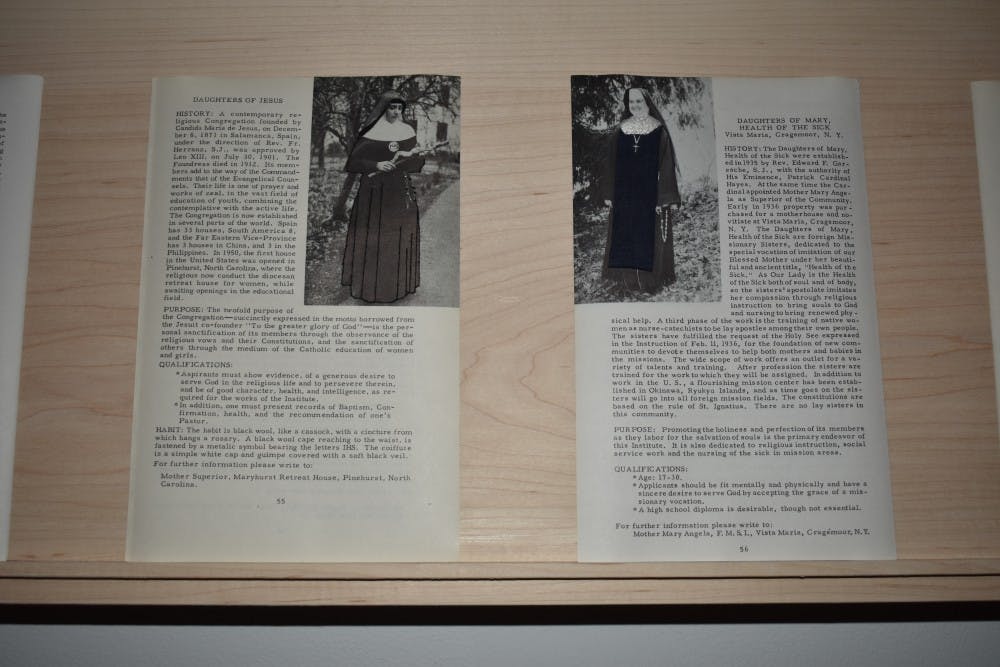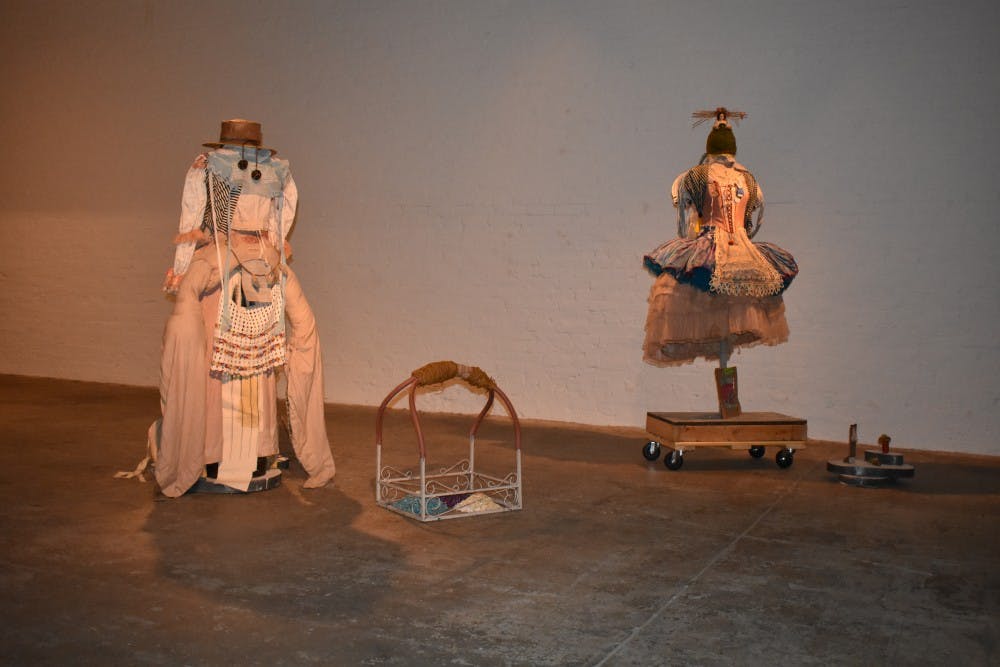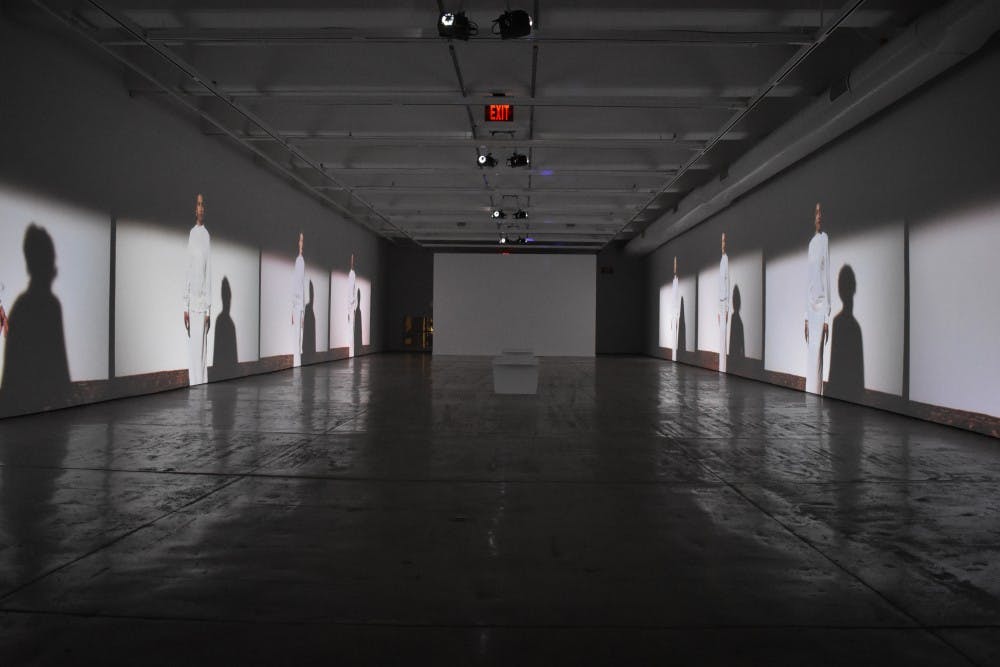Through February 17, 2019, the Fabric Workshop and Museum will be presenting Suzanne Bocanegra: Poorly Watched Girls. Spread out across three floors, the exhibit is a multimedia exploration of the way women in trouble are portrayed, drawing from a film, an opera, and a ballet. Amidst the campus conversations surrounding sexual assault and treatment of women fueled by the recent Kavanaugh hearings (such as those of Anita Hill, a law professor, and a survivor), the exhibition is perhaps now more relevant than ever.
“It’s a very distinct aesthetic,” Katie Parry, Museum Tour Coordinator, said. “It’s very layered and warm.” Clearly so. A red–haired girl greets you. She’s clad in a mustard–yellow, polka–dotted blouse atop a red–and–white checkered apron. Above, music of the autoharp fills the daunting silence with the strums of Shara Nova, lead singer and songwriter of My Brightest Diamond. The same verses repeat. Again. And again. It’s a homage to Bocanegra’s grandmother’s experience with dementia. Such a struggle with the illness is representative of the physical ailments typically seen as cumbersome, but Bocanegra’s portrayal is to the contrary. Against the autoharp and the calm, serene face of the girl, dementia, here, is no onus, but rather a sort of beauty. The negative perception of the illness, though bearing truth in terms of the physical consequences, is in part due to a societally imposed view. And in this case, an imposed view on a woman.

Into the next room is “Dialogue of the Carmelites,” a reference to the 1956 opera. The opera itself is a fictionalized retelling of the convent of nuns who chose to become martyrs over giving up their vocations in light of the French revolution. Drawing upon this, the art piece is a blank room, centered by a bench, with a wooden panel crossing the center. On this panel are pages after pages of the biographies of each nun, on their histories, purposes, qualifications, and habits. Music, here, also plays an important role, with a constant repetition of “When I’m alone I….” Crowdsourced and randomized from a Google search of “When I am alone,” the audio provides a striking background to reflect on the private contemplations of the nuns as they are cloistered with silent prayers.
On the eighth floor of the museum is the remake of one of the oldest classical ballets, La Fille mal gardeé, translated as “The Poorly Watched Girl.” In the ballet, a young daughter, in spite of her mother’s wishes, yearns to marry a man her mother does not approve of. Representing her troubles as a result of being “poorly watched,” Bocanegra reimagines the costumes and sets of this ballet to show the romantic idyllic backdrop.

But the centerpiece is one floor above, titled “Valley.” It’s an immersive video experience, based on Judy Garland’s brief stint in the 1967 film, Valley of the Dolls. Brief because she famously walked off set with her wardrobe. Her time on this film was marked by a sharp dichotomy between portrayal of a wonderfully sweet woman on screen and her own struggle with addiction off the camera. Again, the immediate switch to belie her personal problems is yet another exemplification of what it means to be a poorly watched girl–just like it is today. In showing this, the video divides two opposite walls each into four equal partitions. Each section is a recreation of the original wardrobe test. With eight prominent, accomplished women playing Garland in each section, each is a replica of the screen next to it–same makeup, same clothes, and same hair.
While drawing from three apparently incomparable shows, Bocanegra ties all of them together through the theme of a poorly watched girl and the consequences of such. “It really connects to current events with the #MeToo movement and the questions that arise from it,” Perry said. And it’s true–it’s an exhibit that forces anyone to rethink and readapt their perspectives of what it is to be a poorly watched girl.

